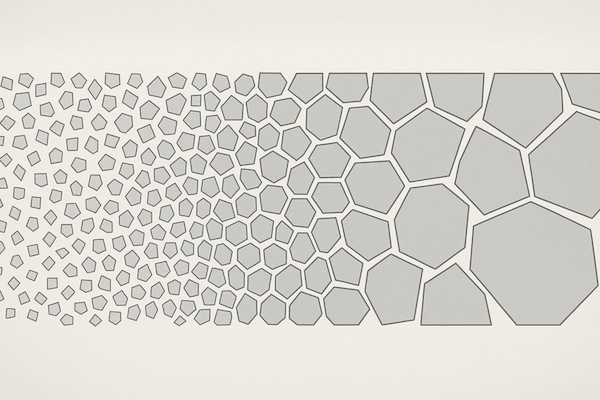
In the world of advanced materials and tooling, one term that frequently arises is “grain size.” While it might sound like a detail only metallurgists care about, grain size plays a critical role in the performance, strength, and durability of tungsten carbide tools used across mining, machining, oil & gas, and precision manufacturing industries.
So—what is grain size, and why should you care?
What Is Grain Size?
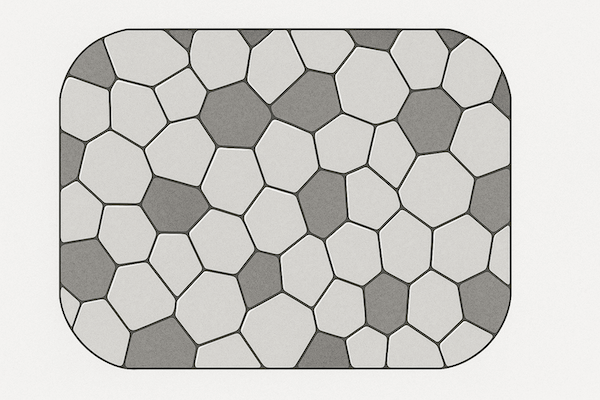
Grain size refers to the average size of the individual tungsten carbide (WC) particles in a cemented carbide material. These particles are tightly bonded together by a metallic binder (usually cobalt or nickel), forming a composite material with exceptional hardness and strength.
Grain sizes are typically measured in microns (μm) and are broadly classified into:
Ultrafine (< 0.5 μm)
Submicron (0.5 – 1.0 μm)
Fine (1 – 2 μm)
Medium (2 – 6 μm)
Coarse (> 6 μm)
How Grain Size Affects Tungsten Carbide Tool Performance
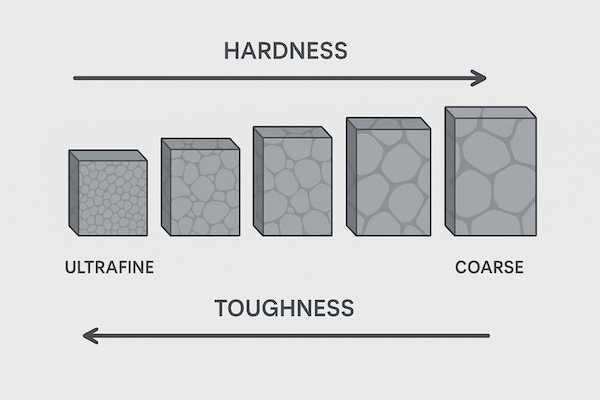
Grain size directly influences the mechanical properties of the material, especially hardness, wear resistance, toughness, and thermal behavior. Here’s how:
| Grain Size | Hardness | Toughness | Wear Resistance | Typical Application |
|---|---|---|---|---|
| Ultrafine | Very High | Low | Excellent (for precision) | PCB drills, micro-end mills |
| Submicron | High | Moderate | Excellent | Metal cutting inserts |
| Fine | Moderate | Good | Good | General-purpose machining |
| Medium | Balanced | Better | Moderate | Mining picks, wear parts |
| Coarse | Lower | Excellent | Lower | Impact tools, heavy-duty drilling |
Smaller grains = higher hardness but more brittle.
Larger grains = better toughness but lower hardness.
Why Control Grain Size in Carbide Manufacturing?
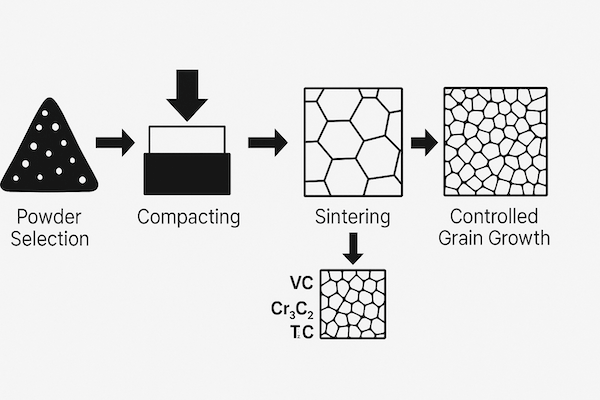
Manufacturers carefully control grain size using powder preparation and sintering techniques because:
Grain refinement improves wear resistance and edge retention
Coarser grains provide better impact resistance in shock-loaded conditions
Consistent grain size ensures uniform tool performance
Grain size also affects sintering shrinkage and final tolerances
Balancing grain size is crucial to tailoring tools for specific applications—too fine and the tool may chip; too coarse and it may wear too quickly.
Grain Growth and Additives
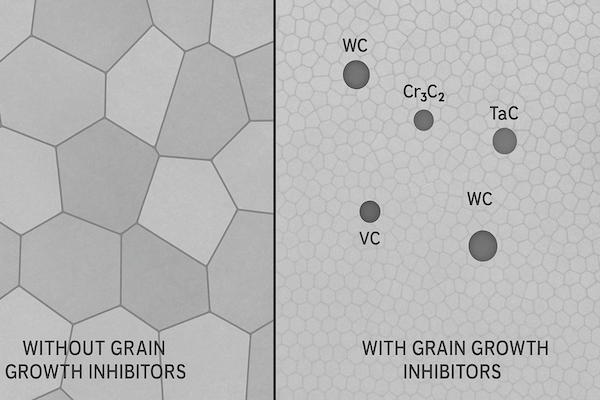
During sintering, WC grains naturally tend to grow. To prevent excessive growth and preserve desired properties, manufacturers often add grain growth inhibitors such as:
Vanadium carbide (VC)
Chromium carbide (Cr₃C₂)
Tantalum carbide (TaC)
These additives stabilize the microstructure and help maintain performance consistency under extreme machining or cutting conditions.
Conclusion
Grain size might be invisible to the naked eye, but its impact on tungsten carbide tools is profound. From ultra-precise micro-drills to tough mining picks, choosing the right grain size is essential to achieving the perfect balance between hardness, toughness, and wear resistance.
Understanding grain size isn’t just for scientists—it’s a key to optimizing tool performance and ensuring longer service life in the field.
